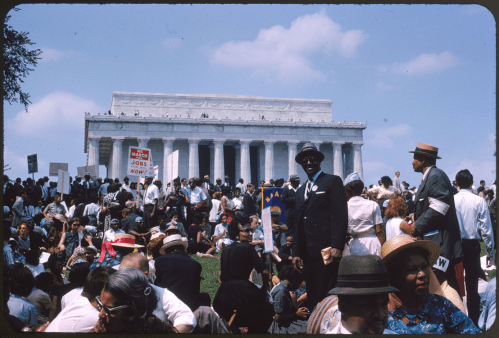On 16 May 2009, the Sri Lankan government announced that it had overrun the last insurgent stronghold and that 26 years of civil conflict had finally come to an end. The Liberation Tigers of Tamil Eelam (LTTE) had been vanquished, its leader had been killed and the military insurgency was finished. Many danced in the streets of Colombo and a stream of messages from world leaders congratulated the government on its successful victory over terrorism.
View complete journal issue at www.peaceops.com
But the humanitarian emergency continues. The underlying causes of the Tamils’ demands—whether for autonomy or simply greater respect for their human rights—have yet to be addressed. The government has come under strong criticism for the way it handled its final assault on the Tigers and the high civilian casualties which occurred. In sum, it is still too early to tell whether the end of the war will usher in a new era of peace and stability or whether it represents just another pause in a conflict that has gone on for too long.
Moreover the last six months of the war also bring into stark relief the challenges facing the humanitarian community in its work in places far from the small island nation of Sri Lanka. In fact, Sri Lanka’s experiences these past few months could be a textbook on the breadth of the challenges facing the humanitarian community. Landmines, child soldiers, the militarization of aid, lack of access and insecurity for humanitarian workers—unfortunately, Sri Lanka has had it all.
Since 1983, Sri Lanka has been embroiled in a violent civil war, rooted in historical differences between the Buddhist Sinhalese majority and the primarily Hindu Tamil minority. The Tamils, who make up some 20 percent of the population and are concentrated in the north and eastern parts of the country, have long argued for more equitable treatment. Building on growing demands for more autonomy, insurgent Tamil groups emerged in the 1970s. Over time, the Tigers, as the LTTE was known, emerged as the most militant and most effective of these liberation groups. The LTTE adopted guerrilla and terrorist tactics against the Sinhala-dominated government and other targets, and has the dubious claim to fame of being the first group to use suicide bombers. Supported by a large diaspora, the Tigers carried out violent attacks on government officials which in turn led to repeated army offensives. The LTTE’s tactics led to its being banned as a terrorist organization by the United States, the European Union, India, Australia and many other countries. And following the terrorist attacks of September 11, 2001, the Sri Lankan government has largely portrayed its fight against the LTTE as part of the Global War on Terror.
In the years since 1983, the conflict has killed some 80,000-100,000 people, led tens of thousands of Tamils to seek refuge in neighboring India and displaced hundreds of thousands of people within the country. Various international efforts to support a negotiated end to the conflict, including the deployment of the Indian Army as a peacekeeping force from 1987 to 1990, were unsuccessful. In 2002, a ceasefire agreement was signed with international mediation but it fell apart and the conflict resumed again in late 2005. This time the government insisted that it would not be deterred from pursuing am military victory. Beginning in 2006, a series of military offensives against the LTTE led to the insurgents being driven out of the entire eastern part of the country. A year later, the government offensive shifted to the north and over the course of two years, the LTTE was confined to an ever-smaller area of territory. By early 2009, the LTTE had fallen back to a small area in a part of northeastern Sri Lanka known as the Vanni, where it made its last stand.
For a few months, the humanitarian world’s attention focused on a bit of territory within the Vanni where some 200,000 civilians were trapped between an increasingly desperate LTTE and government forces determined not to allow this opportunity to pass. Civilians lived in a shirking area called a ‘safe zone’—a piece of territory which by April of this year was smaller than the size of Central Park in New York City. They were victims of heavy shelling by government forces, were used by the LTTE as human shields and shot by LTTE cadres if they tried to escape. Food water, shelter and medical care were in desperately short supply. The United Nations, the U.S. government and many others called repeatedly for a ‘humanitarian pause’ to allow civilians to escape and international workers access to those in need. With a few exceptions, the military priorities carried the day. Civilians who managed to escape were placed in government-run camps where they had little freedom of movement and international agencies had almost no access.
When the military overran the area in May, the remaining civilians were moved into increasingly overcrowded camps run by the Sri Lankan military. The government justified the structure of these camps by arguing that many LTTE had sought protection by infiltrating the displaced civilian populations. U.N. officials, including the Representative of the Secretary-General on the Human Rights of Internally Displaced Persons, urged the government to screen the displaced, to separate out the militants and to allow the rest of the internally displaced freedom to move and locate their relatives. But so far, only a few elderly people among the 250,000 people displaced from the Vanni have been allowed to leave. Access to the camps by independent observers and humanitarian agencies is as limited as it was during the fighting. In fact, the government has forced some NGOs to leave by refusing to renew their visas. Some charge that the government limits access to prevent reports on the extent of suffering in the Vanni during its final assault, citing the case of three Sri Lankan doctors who were arrested for reporting on casualty figures in hospitals where they were working during the bombardment.
While the humanitarian issues in the Vanni are many and urgent, they are far from the only humanitarian challenges facing the country. In fact, Sri Lanka has a long history of restricting the operations of aid agencies and many humanitarian workers have been killed in recent years. In addition, the newly displaced half a million people from the Vanni add to the 500,000 or so who had been displaced, often multiple times, before this latest offensive. While most of the 170,000 or so displaced in the eastern part of the country have returned to their communities, they still face major problems of security, conflict and tension among different groups. The government has announced that the newly displaced will be returned to their communities in the next six months. But there are questions about the clearance of landmines and unexploded ordnance that dot the Vanni and will affect the ability of the displaced to return. And for those who have been displaced for longer periods of time, there are questions about whether solutions can be found to the layers of property disputes which are the results of decades of displacement. The U.N. Guiding Principles in Internal Displacement, based on binding international law, state that the onus of providing assistance to and protection of the internally displaced persons lies with the national authorities. While the international community can assist, it is the government which is responsible for creating conditions for the displaced to find durable solutions.
Sri Lanka also raises questions about transitional justice. Many human rights groups and others have called for investigations into possible violations of international humanitarian law by the government and by the LTTE. For its part, the Sri Lankan government managed to fend off these calls during a recent special session of the U.N. Human Rights Council. However, the issues of accountability, justice and reconciliation remain. Can the government demonstrate a new spirit of reconciliation in responding to the concerns and grievances of the country’s Tamil minority with concrete actions? What role will the million-strong Sri Lankan diaspora play in the months and years ahead? Will the diaspora invest in projects of peacebuilding or will it seek other means of continuing the struggle for Tamil autonomy?
Sri Lanka’s military victory and the ending of the country’s quarter-century civil war is an important watershed. But there is a risk that the gains on the battlefield could be undermined unless there is serious attention to upholding the human rights of civilians affected by the conflict, finding durable solutions to those displaced by violence and ultimately by addressing the country’s need for reconciliation.
Published in the July-August 2009 edition of Journal of International Peace Operations (www.peaceops.com).


Commentary
At Long Last: Finally Peace for Sri Lanka?
July 7, 2009